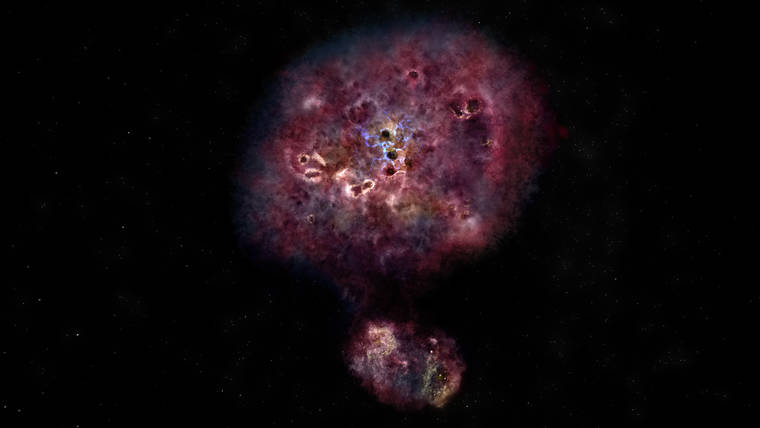A team of astronomers using one of the Maunakea observatories has discovered a dead galaxy nearly as old as the universe itself.
The team, led by scientists at the University of California, used an instrument at the W. M. Keck Observatory to identify an unusually massive galaxy that formed less than a billion years after the universe was created.
“The early universe had this violent period of star formation,” said Keck astronomer Percy Gomez, who co-authored a paper on the discovery. “But this galaxy also had this violent period before the universe was 1 billion years old, and by the time it was 2 billion years old, it had already gone into retirement.”
The discovery was made thanks to a tool at Keck called MOSFIRE, or the Multi-Object Spectrograph for Infrared Exploration. By taking several different images of different patches of the sky and examining them through different spectra of light, the distant galaxy, located 10 billion light years away, could be identified.
Based on the team’s findings, Gomez said the galaxy — classified as XMM-2599 — was forming more than 1,000 stars per year. By comparison, our Milky Way Galaxy, which is itself one of the oldest known galaxies, has one-tenth the mass of XMM-2599 and forms roughly one star per year.
In the images of the galaxy however, XMM-2599 is much less productive. Although the galaxy’s once-high rate of star formation categorized it as an ultramassive galaxy, it has since “died,” meaning that it has stopped forming significant amounts of new stars, Gomez said.
The cause for the galaxy’s sudden demise is still unknown, Gomez said.
“In order for a galaxy to form stars, it has to accrete material,” Gomez said. “Maybe it ran out of material, or maybe the black hole at its center turned on (and) interfered with the process.”
By identifying such an unusual galaxy, Gomez said astronomers might be able to find similar galaxies closer to our own and determine how such bodies evolve and change over time. Because XMM-2599 is so far away, astronomers cannot know how that galaxy has changed in the last 10 billion years.
“Perhaps during the following 11.7 billion years of cosmic history, XMM-2599 will become the central member of one of the brightest and most massive clusters of galaxies in the local universe,” wrote co-author Michael Cooper.
Email Michael Brestovansky at mbrestovansky@hawaiitribune- herald.com.

